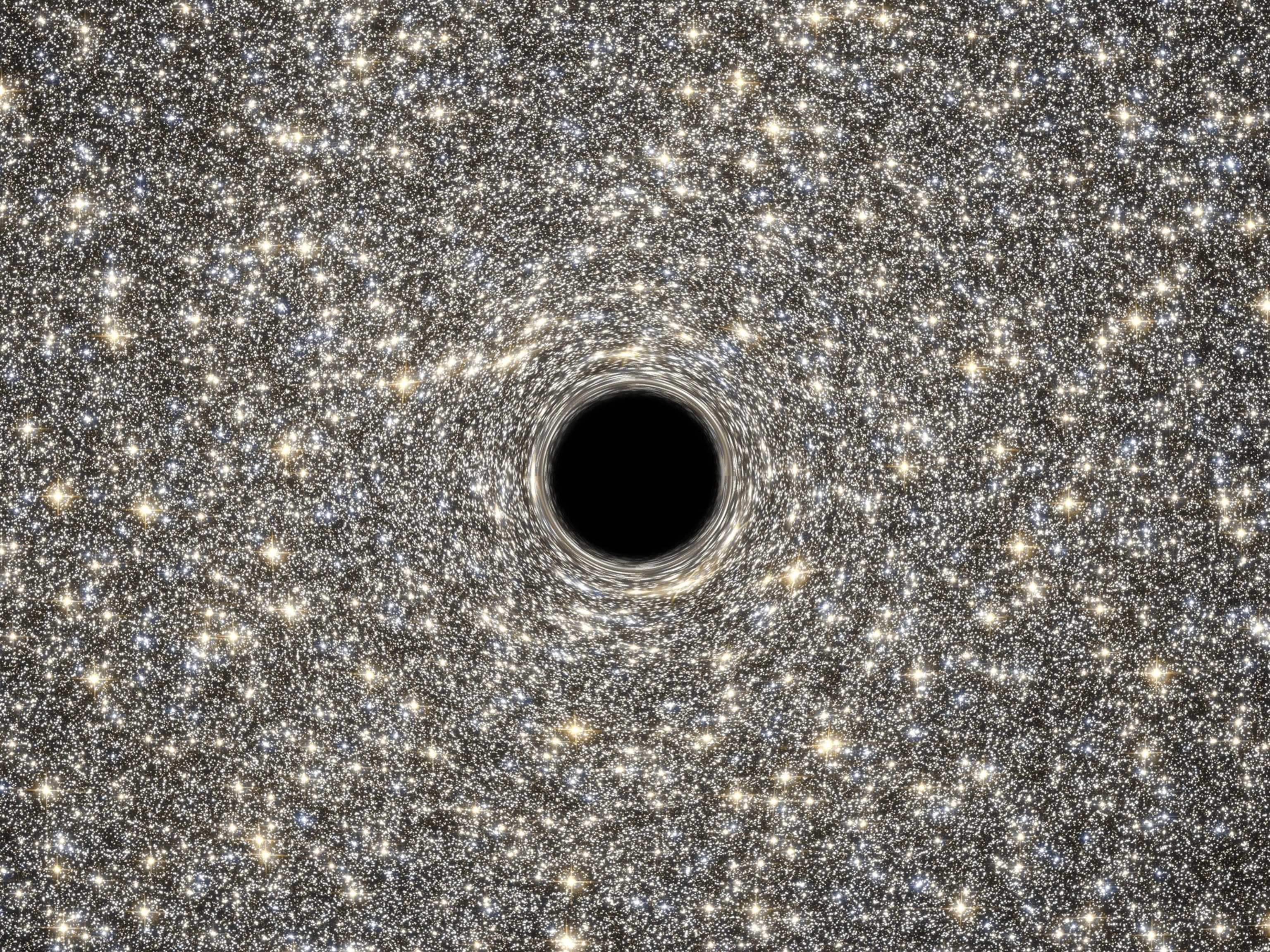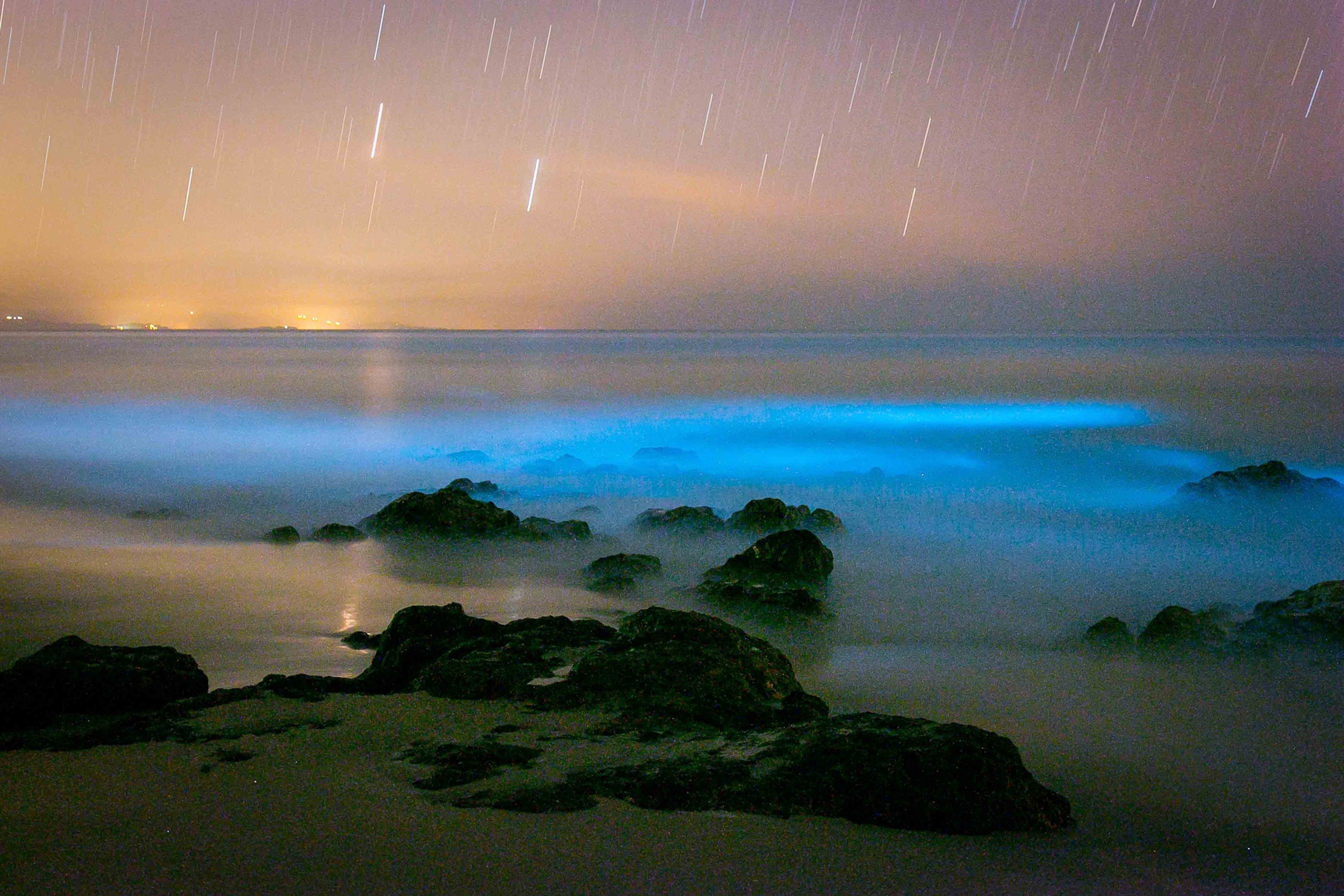
Best Space Pictures: Rover Selfie, Black Hole Blast
Hubble gets lost, an ultramassive black hole blasts away, and the moon photobombs the sun in this week's best space pictures.
The ocean glows an eerie blue and stars leave streaks across the sky in a photograph taken on a beach in Montezuma, Costa Rica, on January 25.
Often, microscopic algae are responsible for creating these beautiful light shows in the ocean. Physically tumbling around in ocean waves can trigger the production of this kind of illumination.
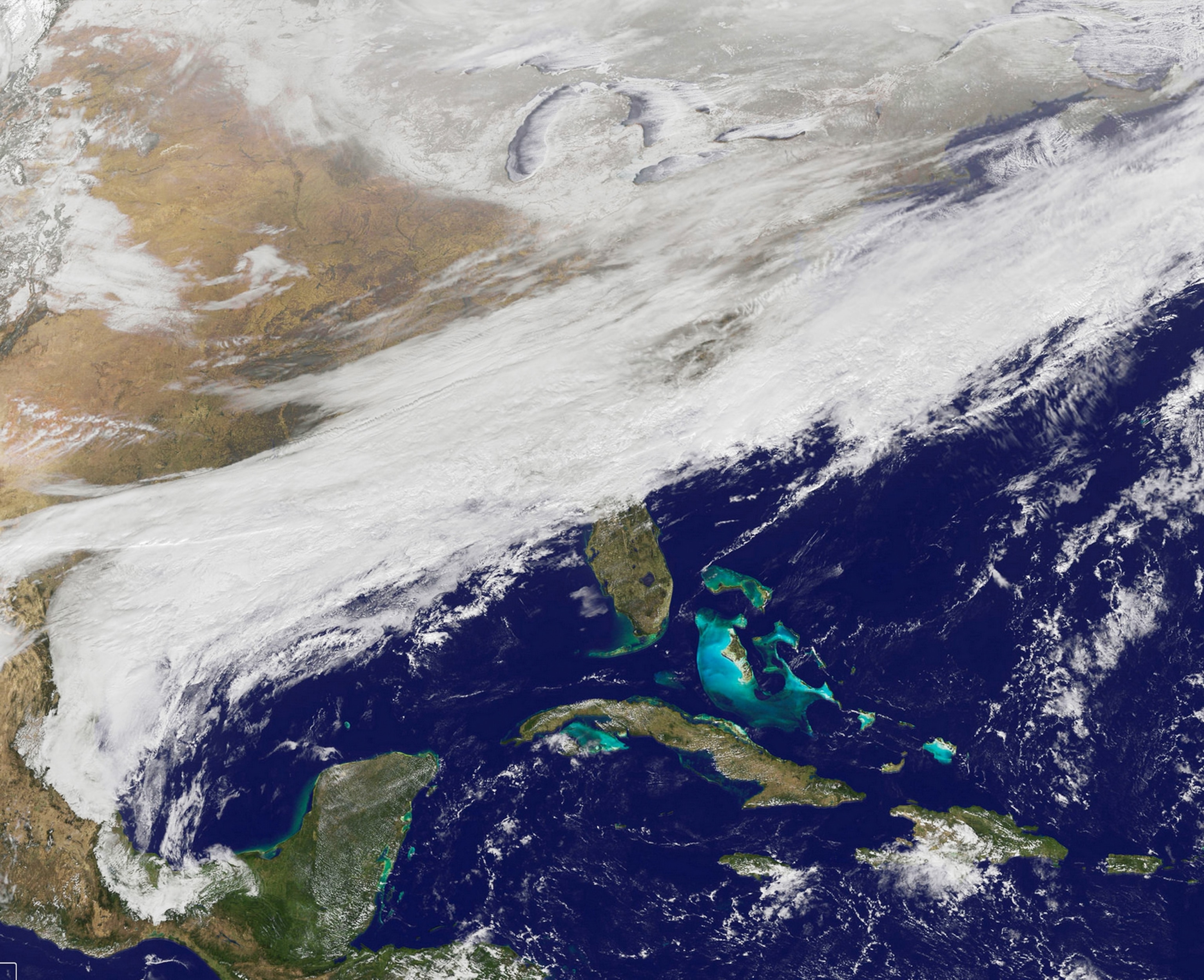
Major parts of the U.S. have suffered under the chilly embrace of Arctic air, courtesy of the polar vortex—a mass of freezing cold air blown south from Canada.
Residents of the Gulf Coast states and those up the Eastern Seaboard have been treated to snowstorms and temperatures that wouldn't seem out of place in Alaska. (See "Editor's Pick: Best Photos From the Southern Snowfall.")
This especially frosty winter manifests in the clouds and snow that blanket much of the U.S. East Coast in this NOAA satellite image taken January 28.
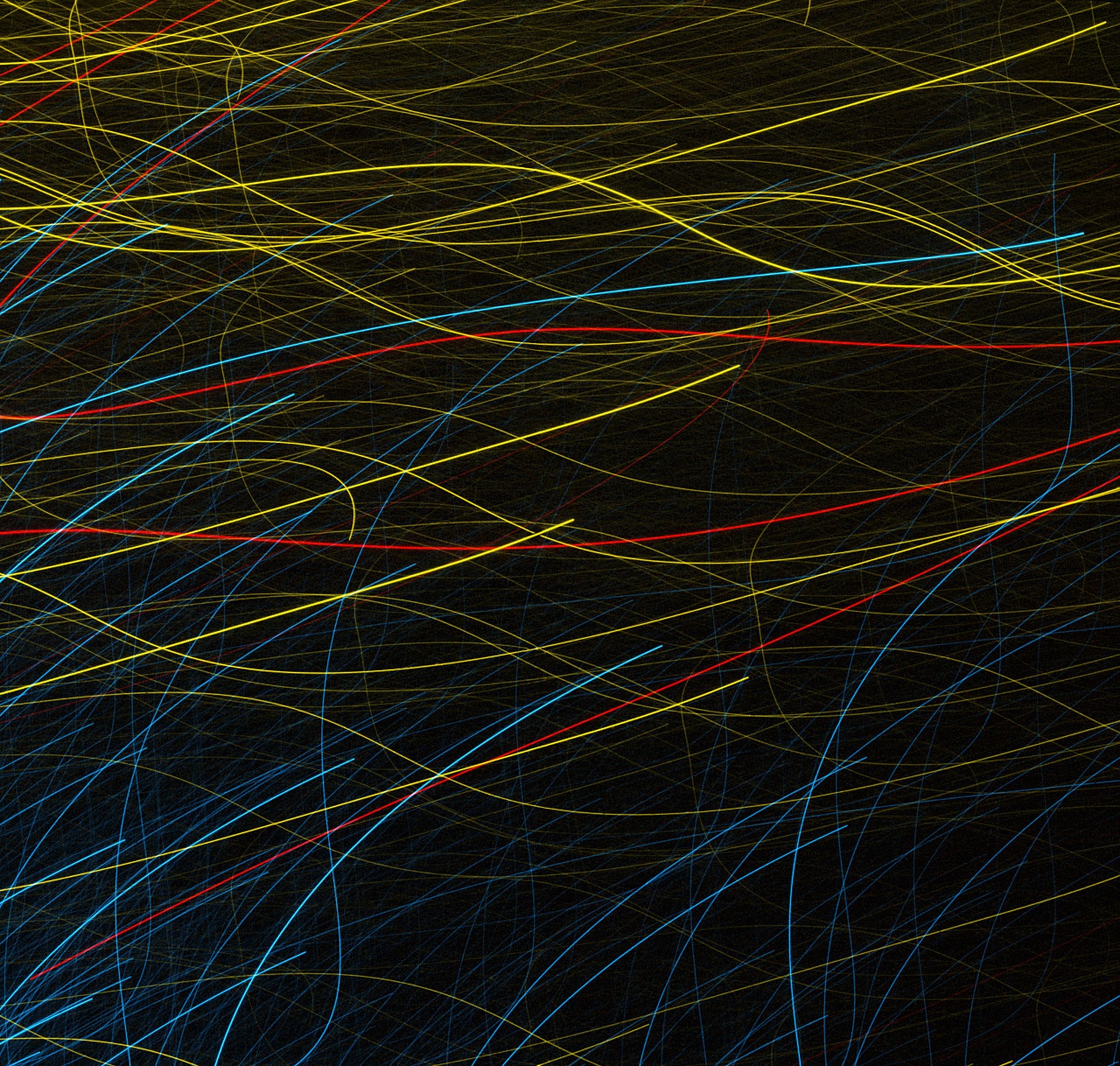
Usually, when people get lost they end up flustered, sweaty, and late. When Hubble gets a little lost, we get abstract art.
This is an actual image, released January 27, taken by NASA's famous eye in the sky. But it was an accident.
When Hubble calibrates its position before making observations, it locks on to a fixed point in space—called a guide star—in order to make any corrections.
For some reason, Hubble locked on to a bad star—perhaps a binary star—which caused an error in its tracking system, resulting in the image above.
The red streaks are star tracks from globular cluster NGC 288.

Our sun emitted a midlevel solar flare (left) on January 30, captured in this image taken by NASA's Solar Dynamics Observatory.
But the moon sneaks its way into the image as well, as seen in the curved bit of negative space on the lower right.
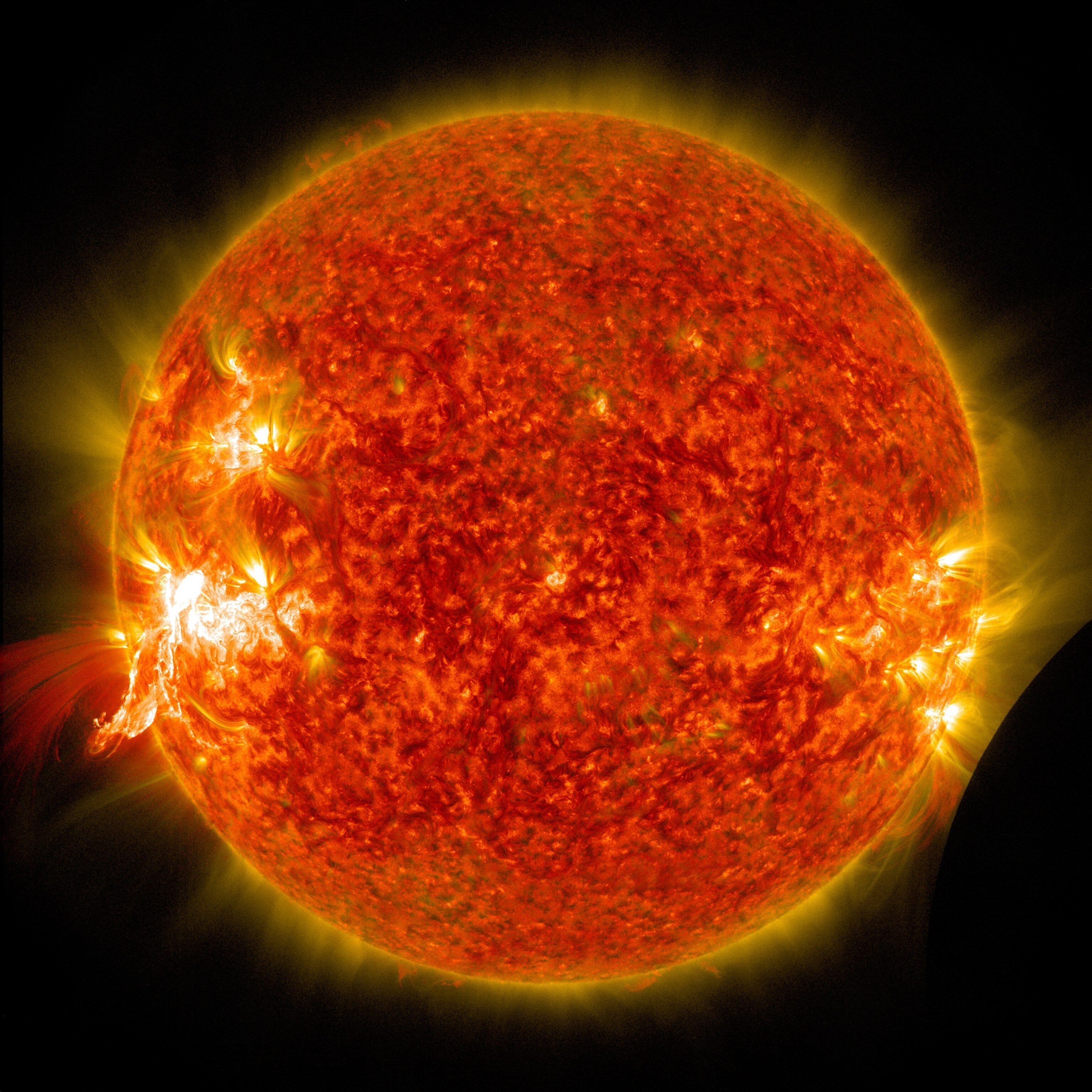
This self-portrait of the Mars rover Opportunity reveals the lone robot looking a little dusty, perhaps a little creaky.
But after a decade roaming the red planet, Opportunity is still kicking. Its handlers took images of their rover and combined them into a self-portrait, which they released January 23—Opportunity's ten-year anniversary. (See "NASA Celebrates 10-Year Anniversary of Mars Rover.")
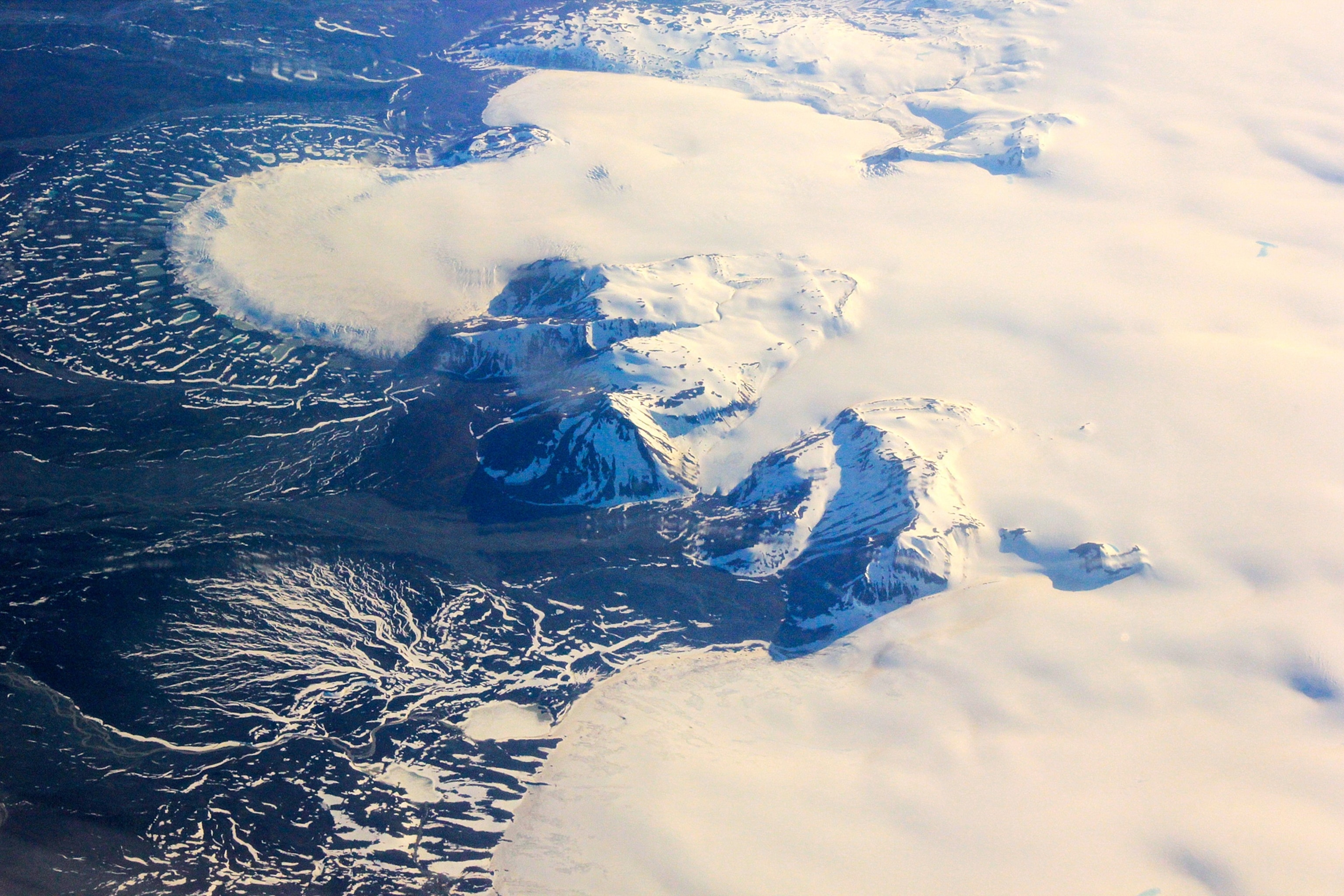
A part of the Hofsjökull ice cap in Iceland dominates the left side of this image, released on January 28. The fan of ice in the upper left corner is a glacier called Mûlajökul.
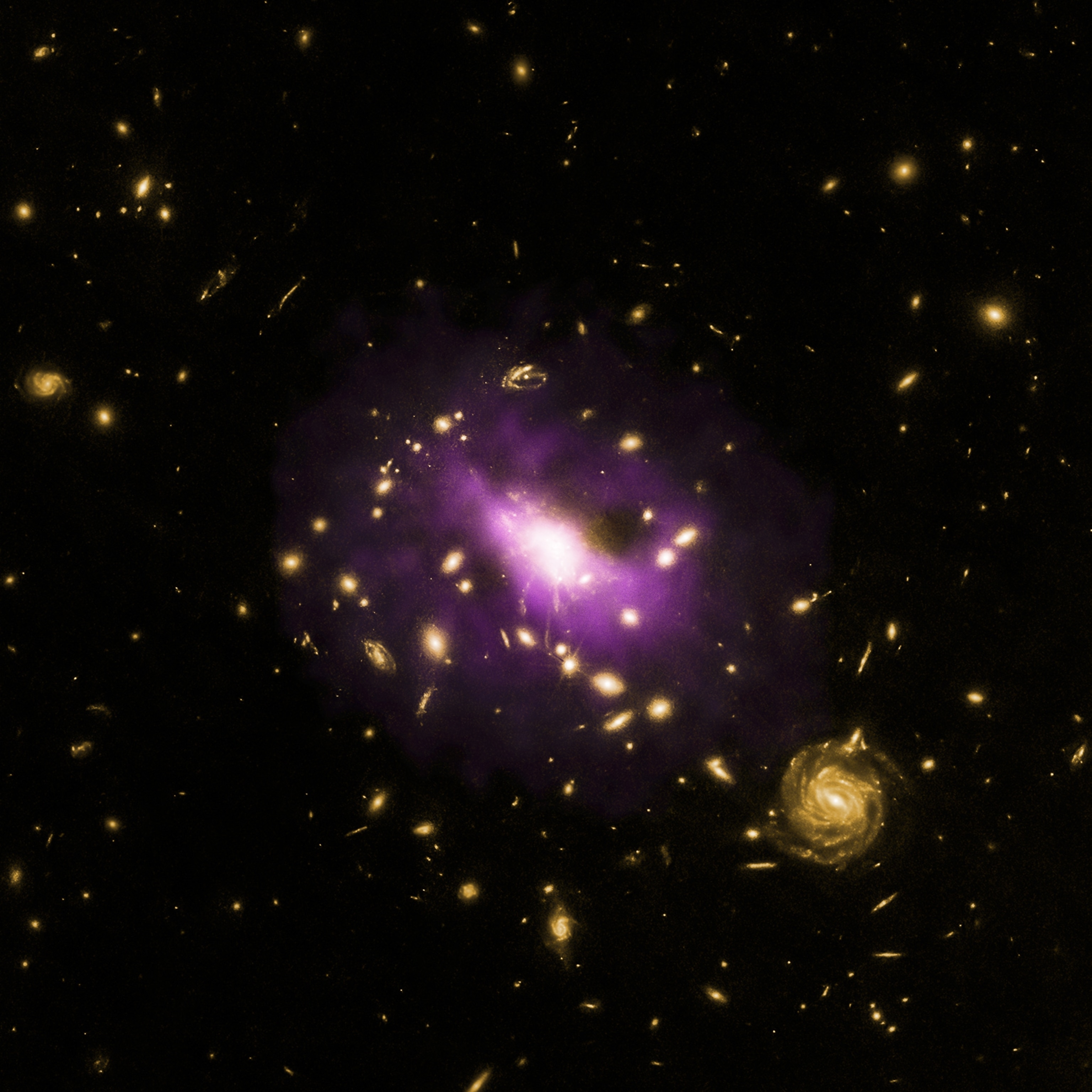
A monster lurks at the purple heart of this image, released January 23. That beast is one of the most powerful black holes known to science, as observed in this composite image from NASA's Chandra x-ray observatory and the Hubble Space Telescope.
The purple cloud, seen through Chandra, is actually hot gas surrounding galaxy cluster RX J1532. The black hole at the center is sending out supersonic jets so powerful, they're tearing holes the size of the Milky Way galaxy in the cloud. (See "No Black Holes Exist, Says Stephen Hawking-At Least Not Like We Think.")
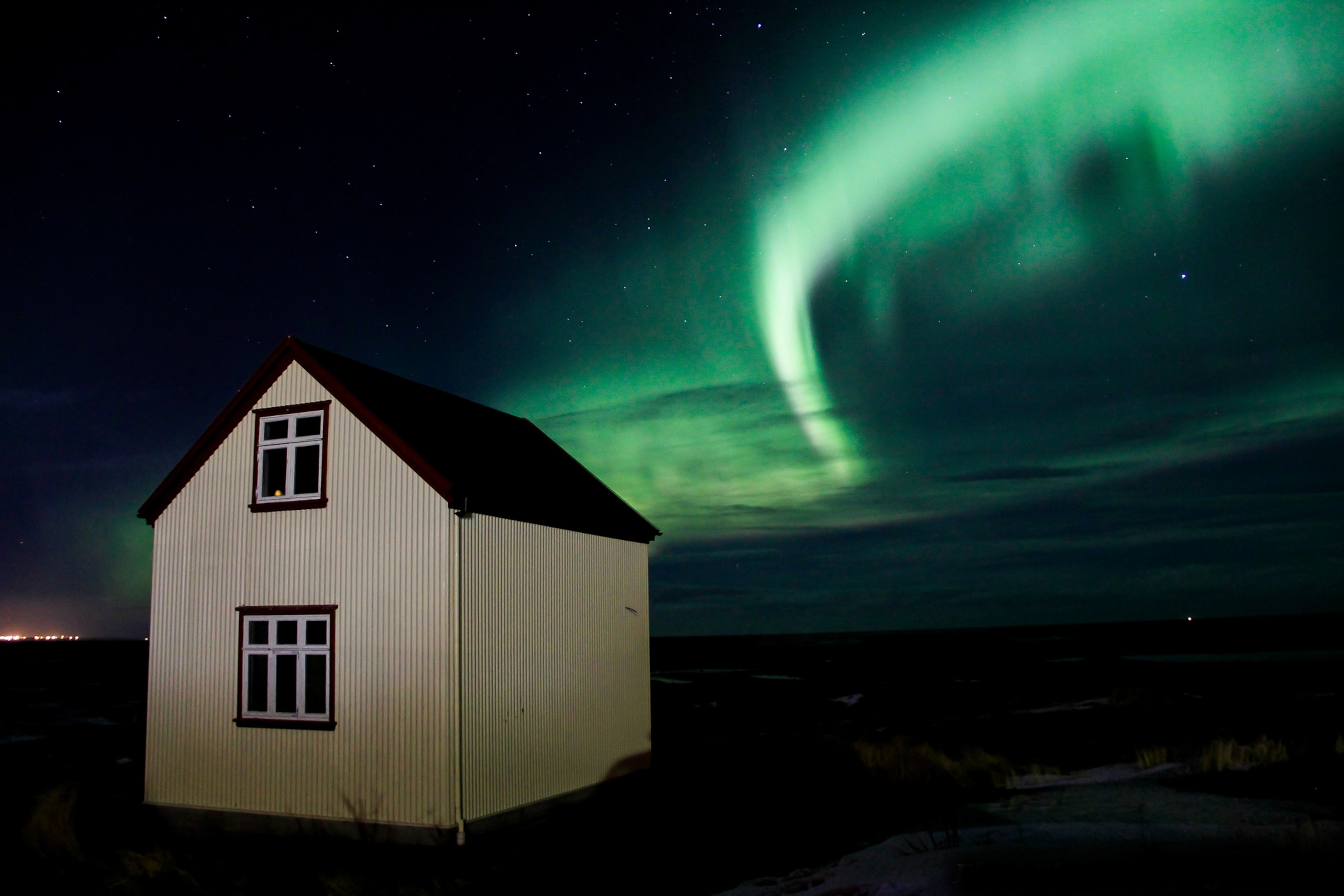
The northern lights swirl above a building on Reykjanes Peninsula in Iceland. Flosi P. uploaded the image to National Geographic's Your Shot community on January 25. (See "Aurora Pictures: Best Fall Photos of Northern Lights.")
Follow Jane J. Lee on Twitter .



